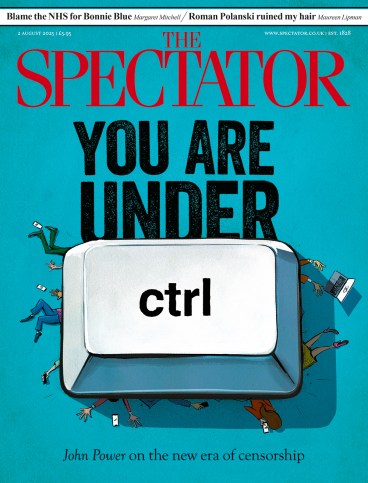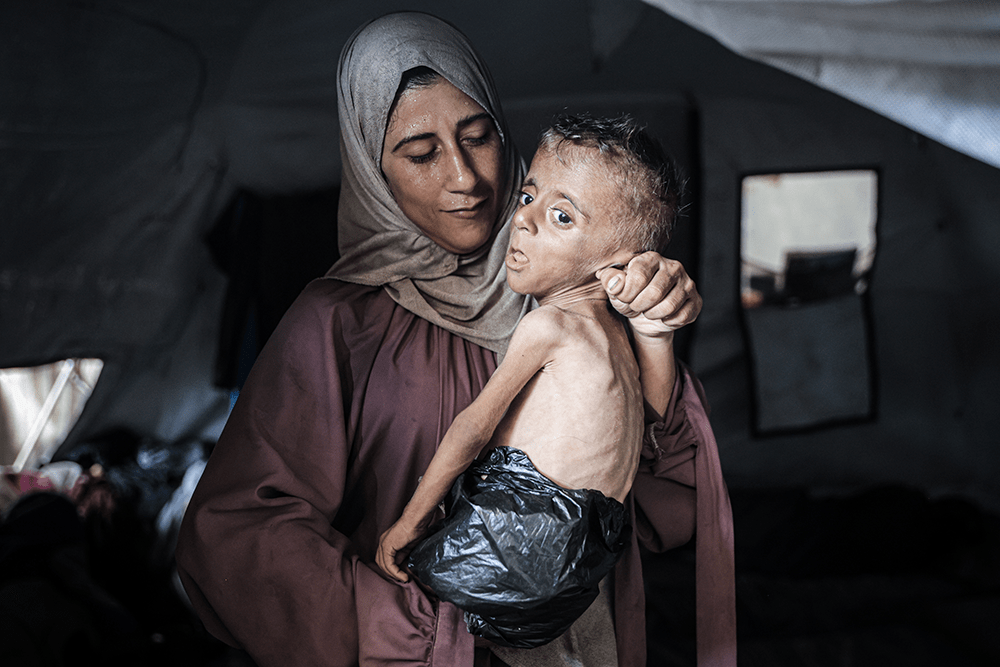
Sir Keir Starmer’s apparent justification for threatening to recognise a Palestinian state by September is pictures. ‘I think people are revolted at what they are seeing on their screen,’ he said on Monday. On Tuesday, he spoke of ‘starving babies, children too weak to stand, images that will stay with us for a lifetime’. Pictures, however grim, seem a weak basis for a massive constitutional change. Sir Keir is also assuming that the pictures in question are ‘true’. Yet pictures, precisely because of their emotional impact, often undergo less editorial scrutiny than words and are frequently reproduced by other media unchecked. At the weekend, the New York Times put an eloquent picture of an emaciated little boy in his mother’s arms on its front page headlined, ‘Gazans are dying of starvation’. Similar coverage appeared in many British publications. According to research by David Collier, a pro-Israel journalist, the boy was not starving and a healthy-looking boy, probably his brother, had been cropped from the published versions, which were first put out by a state-run Turkish agency. Young Mohammed suffers from cerebral palsy and hypoxemia, Collier reports. Obviously, his chronic plight is made worse by the Gaza war. His mother, it seems, consented to the pictures to draw attention to his suffering, but she did not conceal the medical facts which explain his condition. Either deliberately, or lazily, the world’s media omitted those facts, as the New York Times has now half admitted. Most of my trade are averse to any awkward story which challenges our dominant Middle Eastern narrative. The delivery of most food in Gaza is controlled by Hamas, Unrwa and similar agencies. They want to maintain this duopoly against newcomers like the Gaza Humanitarian Foundation and to blame Israel. This collusion is their business model. No doubt Israel is partially at fault, but this Hamas/UN combination are unreliable witnesses. A recent internal BBC editorial email, revealed in The Spectator by Jonathan Sacerdoti, directs its journalists to say that the GHF system ‘doesn’t work’. The sender never asks his journalists to find out why, yet what he calls ‘the body count from the killings of Palestinians’ could well have to do with Hamas’s struggle to maintain their stranglehold. He adds that the opinion of ‘the world’s important NGOs suggests that [Israel] is failing on that responsibility’. Of course it does! Those NGOs always blame Israel. They never directly say that Hamas massacred 1,195 Israelis and others on 7 October 2023, or that they murder, rob and control the Gazan people. The depressing truth is that the main players have an interest in not telling us what is happening in Gaza. Among them must be counted most of the media.
In this connection, I was surprised to see William Hague, in his Times column, describing Tom Fletcher, the UN head of humanitarian affairs, as ‘not a person who exaggerates’. In May, Mr Fletcher said that ‘There are 14,000 babies [in Gaza] who will die in the next 48 hours unless we can reach them,’ an exaggeration so Trumpian that he later had to apologise. Now he says that the next few days are ‘make or break’ for Gaza because one in three people has not eaten for three days in a row. Mr Fletcher ‘will have good evidence for that’, writes Lord Hague. How can one know?
Recently, I found myself in one of Horatio’s Gardens. Horatio Chapple was a brave and much-loved boy who was killed by a polar bear on his school’s Arctic expedition. Both his parents are doctors. The gardens laid out and planted in his memory are specifically in NHS hospitals dealing with spinal injuries. There are now eight of them, spread across the kingdom. I was visiting a friend in the Robert Jones and Agnes Hunt Orthopaedic Hospital near Oswestry. Already endangered by two earlier neck-breaks, he had fallen backwards off a gate and sustained a broken disc and vertebra, and more. Part of the hell of such an injury is having to lie still for many weeks without even being able to raise one’s head, staring at the same bit of hospital ceiling. To the extent that the British climate permits, Horatio’s Garden (the charity’s name) addresses this problem. French windows open on to it and we easily wheeled bed and friend into it. The garden is divided into several ‘rooms’ created by hedges, and there are borders of flowers and plants that can be touched as your bed or wheelchair passes. ‘Above us only sky’, as the Lennon song says, but better than that, because also house martins, swifts etc and the sun, which my friend worships. It was a joy to watch him photosynthesise. This particular hospital has a pre-history as a TB sanatorium, where fresh air was regarded as vital. It is lovely to see that principle reapplied for different reasons. I felt how much it mattered that such gardens exist: nature becoming the best nurse.
I hope that at the funeral of the late, great Tom Lehrer, they play what he called his ‘survival hymn’, ‘We’ll all go together’ (1959), which envisages the collective funeral of the human race caused by nuclear Armageddon: ‘Universal bereavement,/ An inspiring achievement,/ Yes, we all will go together when we go.’ Not all his words will be acceptable, I fear, to any congregation from 21st-century Harvard, where he worked. The song ends: ‘And we will all go together when we go./ Ev’ry hottentot and ev’ry eskimo./ When the air becomes uranious,/ And we will all go simultaneous… Yes we all will go together when we go.’ Nowadays those two ethnicities are rebranded Khoekhoe and Inuit. Lehrer could have found an ingenious rhyme to handle the problem.
A numerical change would also be required. Lehrer sings: ‘We will all bake together when we bake./ There’ll be nobody present at the wake./ With complete participation/ In that grand incineration,/ Nearly three billion hunks of well-done steak.’ Today, make that 8.2 billion.








Comments